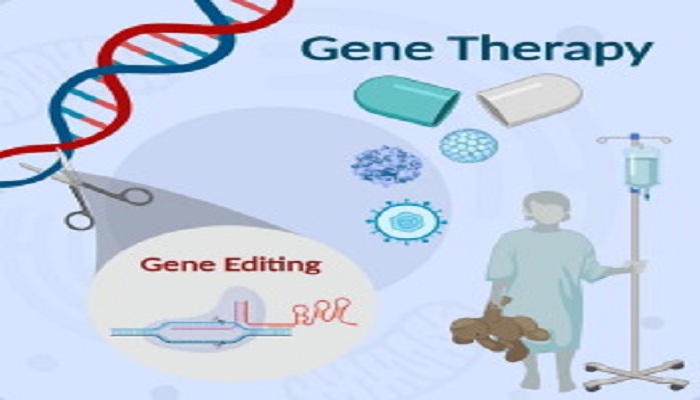Gene Editing For Inherited Diseases

Gene Editing For Inherited Diseases
Published On: 21-10-2024 | 4 min Read
Gene editing for inherited diseases has ushered in a new era of prevention, enabling precise modifications to the genome to correct genetic mutations. With CRISPR-Cas9 technology, scientists can now edit genes responsible for inherited disorders, preventing the onset of diseases. This groundbreaking approach has the potential to eradicate genetic diseases, transforming the lives of millions. By correcting genetic mutations, gene editing offers a proactive solution, shifting the focus from treatment to prevention. As research advances, gene editing is poised to revolutionize healthcare, providing hope for families affected by inherited diseases.
Imagine a world where genetic diseases are a thing of the past. Where families are free from the burden of inherited disorders that have plagued them for generations. Welcome to the new era of prevention, where gene editing is revolutionizing the way we approach genetic diseases.
What is Gene Editing?
Gene editing, particularly with CRISPR(C-Clustered,R-Regularly,I-Interspaced,S-Short,P-Palindromic,R-Repeat)technology, allows scientists to precisely modify the DNA sequence, correcting genetic mutations that cause inherited disorders. This innovative approach has opened up new possibilities for preventing genetic diseases, giving hope to millions of people worldwide.
How Does Gene Editing Work?
Gene editing, specifically with CRISPR-Cas9(CRISPR-Cas9 is a gene editing tool that allows scientists to edit parts of the genome by removing, adding, or altering sections of the DNA sequence. Here’s a breakdown of the name:
- CRISPR stands for Clustered Regularly Interspaced Short Palindromic Repeats.
-It refers to the repeated patterns of DNA sequences found in bacteria, which serve as a defense mechanism against viruses.
-Cas9 stands for CRISPR-associated protein 9.
- It’s an enzyme that acts like a pair of molecular scissors, cutting the DNA at specific locations.
Together, CRISPR-Cas9 refers to the entire system that enables precise editing of the genome. The CRISPR part identifies the target location in the DNA, while the Cas9 enzyme makes the actual cut.)is a precise and efficient technology that enables researchers to modify genes by cutting the DNA at a specific location. The process begins with identifying the target gene or DNA sequence that needs to be edited. Next, a small piece of RNA, called a guide RNA (gRNA), is programmed to recognize and bind to the target DNA sequence. The gRNA is then combined with the Cas9 enzyme, forming a complex that recognizes the target DNA sequence. The Cas9 enzyme cuts the DNA at the targeted location, creating a double-stranded break. This break triggers the cell’s natural repair machinery, which can lead to one of two outcomes: non-homologous end joining (NHEJ), resulting in gene knockout, or homologous recombination (HR), allowing researchers to introduce specific changes to the gene. By supplying a template with the desired edit, researchers can harness the cell’s repair machinery to introduce precise changes to the gene. Finally, researchers verify the edit by sequencing the DNA to ensure the desired change has been made.
Gene editing with CRISPR-Cas9 is a multifaceted process that involves several key steps:
Step 1: Target Identification
Researchers identify the specific gene or DNA sequence that needs to be edited. This involves understanding the genetic code and identifying the specific mutation or variation that needs to be corrected.
Step 2: Guide RNA (gRNA) Design
A small piece of RNA, called a guide RNA (gRNA), is programmed to recognize and bind to the target DNA sequence. The gRNA is designed to be complementary to the target DNA sequence, allowing it to bind specifically to that location.
Step 3: CRISPR-Cas9 Complex Formation
The gRNA is combined with the Cas9 enzyme, forming a complex that recognizes the target DNA sequence. The Cas9 enzyme is an endonuclease that cuts the DNA at the targeted location.
Step 4: DNA Cutting
The Cas9 enzyme cuts the DNA at the targeted location, creating a double-stranded break. This break is a precise cut, allowing researchers to target specific genes or DNA sequences.
Step 5: Repair Machinery Activation
The double-stranded break triggers the cell’s natural repair machinery, which can lead to one of two outcomes: non-homologous end joining (NHEJ) or homologous recombination (HR).
Step 6: Gene Knockout or Gene Edit
If the cell uses NHEJ to repair the break, the result is a gene knockout, where the gene is disrupted and no longer functions. If the cell uses HR, researchers can introduce specific changes to the gene by supplying a template with the desired edit.
Step 7: Verification
Finally, researchers verify the edit by sequencing the DNA to ensure the desired change has been made. This involves analyzing the DNA sequence to confirm that the edit has been successful.
NSMS NURSING INSTITUTE supports the cause of raising awareness among the masses regarding the huge importance of Geneediting.
Applications of Gene Editing:
Gene editing has the potential to prevent a wide range of genetic diseases, including:
- Sickle cell disease
- Cystic fibrosis
- Muscular dystrophy
- Huntington’s disease
- Certain types of cancer
Ethical Consideration:
While gene editing holds tremendous promise, ethical considerations, safety, and regulatory frameworks must be addressed. We must ensure responsible and beneficial applications, prioritizing human well-being and dignity.
Gene editing for inherited diseases marks a new era of prevention, offering hope and transformation for families worldwide. As research continues to advance, we are one step closer to a future where genetic diseases are a thing of the past.
